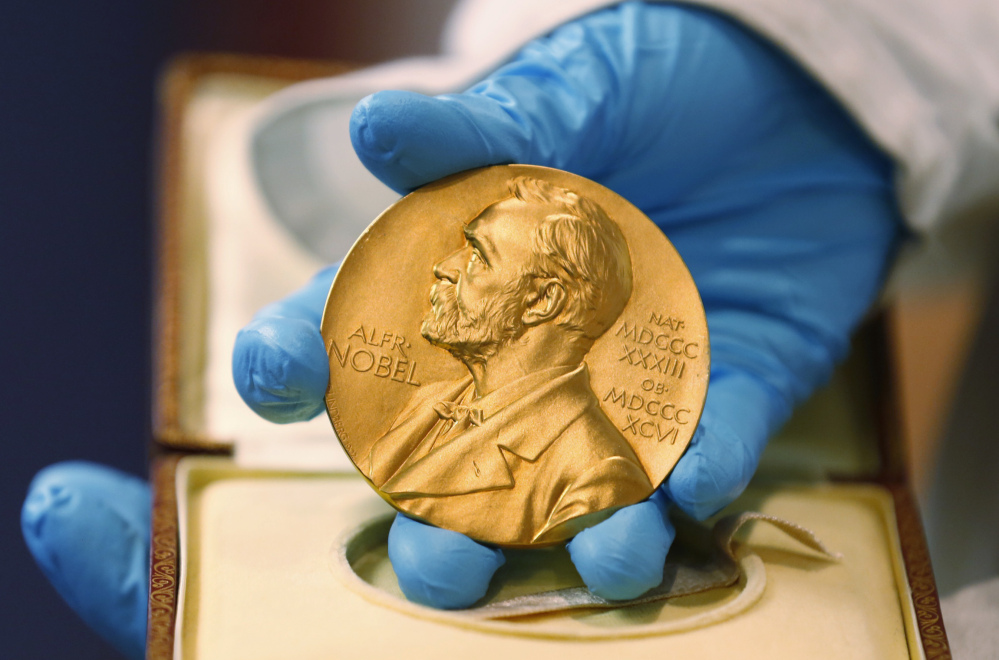STOCKHOLM — David J. Thouless of University of Washington, F. Duncan M. Haldane of Princeton University and J. Michael Kosterlitz of Brown University were awarded the 2016 Nobel Prize in physics on Monday for theoretical discoveries of topological phase transitions and topological phases of matter. All three laureates were born in the United Kingdom, but now conduct their research at universities in the United States.
Most matter exists in the states we see every day: gases, liquids and solids. But at extremely low or high temperatures, matter can start to behave strangely. The three laureates have used advanced mathematical modeling to demonstrate some of the strange properties that can arise in unusual states of matter. In a cold layers of atoms so flat they can be considered two dimensional, you can find superconductors – materials where electrical current can flow through with no resistance from the particles therein – and superfluids, where vortexes can spin forever without slowing down for the same reason.
Using topology – the study of changes that occur step-wise, the properties that remain intact when an object is stretched, twisted or deformed, but not if it is torn apart – the three researchers helped reveal the stunningly strange behaviors of these exotic states of matter.
In the early 1970s, Michael Kosterlitz and David Thouless modeled the existence of superconductivity and suprafluidity in thin layers, overturning the prevailing theory that such configurations of matter could not exist. They demonstrated that superconductivity could occur at low temperatures and also explained the mechanism, phase transition, that makes superconductivity disappear at higher temperatures.
In the 1980s, Duncan Haldane discovered how topological concepts can be used to understand the properties of chains of small magnets found in some materials.
Haldane spoke to the press gathered in Stockholm for Tuesday’s announcement, having been reached on the phone around 5:30 a.m. eastern time.
“I was, as everyone else is, very surprised,” Haldane said. “And very gratified.”
“It was a long time ago,” he said of his own research, “But it’s only now that lots of tremendous new discoveries based on this original work have extended it in many ways.”
Last year’s Nobel Prize in physics was shared by Takaaki Kajita of the University of Tokyo and Arthur B. McDonald of Queen’s University in Canada. Kajita and McDonald were honored for their work on neutrinos, some of the subatomic particles that make up our universe. The two men contributed to research showing that neutrinos, once thought to be massless, indeed have mass.
The award, which was established by Swedish inventor Alfred Nobel in 1895, comes with a prize worth 8 million Swedish krona, or about $937,000. According to the Royal Swedish Academy, the prize is being split two ways – Thouless will receive half the 8 million krona, or around $464,000, because he made “crucial contributions” on multiple fronts. Haldane and Kosterlitz will split the remaining $464,000.
Send questions/comments to the editors.



Success. Please wait for the page to reload. If the page does not reload within 5 seconds, please refresh the page.
Enter your email and password to access comments.
Hi, to comment on stories you must . This profile is in addition to your subscription and website login.
Already have a commenting profile? .
Invalid username/password.
Please check your email to confirm and complete your registration.
Only subscribers are eligible to post comments. Please subscribe or login first for digital access. Here’s why.
Use the form below to reset your password. When you've submitted your account email, we will send an email with a reset code.